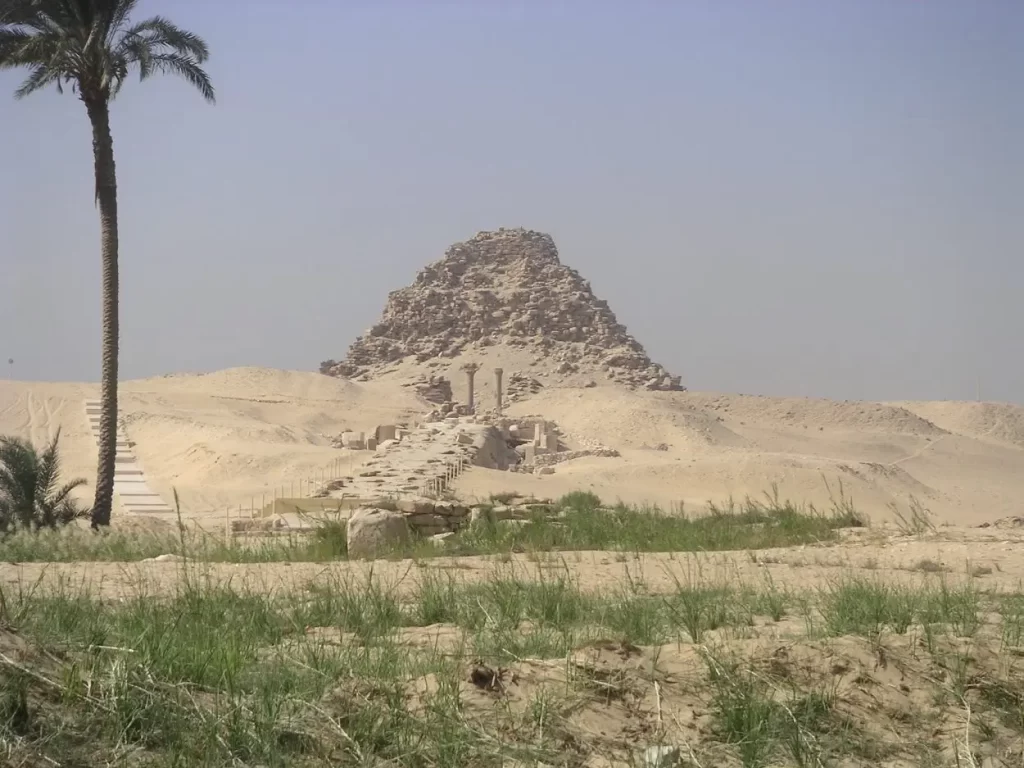A recent discovery by an Egyptian-German archaeological mission has brought to light several hidden chambers within the pyramid of Sahura, located in the Abu Sir Pyramid Field, just south of Giza. This significant find sheds new light on the architectural ingenuity of ancient Egyptian builders and further deepens our understanding of the burial practices of the Old Kingdom.

Sahura, whose name means “He who is close to Re,” was a pharaoh of Ancient Egypt and the second ruler of the Fifth Dynasty, reigning between 2465 BC and 2325 BC. His reign is widely regarded as a period of economic prosperity and cultural advancement. One of the key achievements of Sahura’s rule was the establishment of new trade routes to the distant land of Punt, a region believed to be located in the Horn of Africa. This expansion bolstered Egypt’s access to luxury goods such as myrrh, incense, ebony, and exotic animals. Additionally, Sahura facilitated an increased flow of commodities from the Levantine coast, further strengthening Egypt’s economy.
Unlike his predecessors, who were interred in the renowned royal necropolises of Saqqara and Giza, Sahura chose a different burial site for his pyramid. His decision led to the construction of his pyramid complex at Abusir, a site that later became the burial ground for several rulers of the Fifth Dynasty. Although Sahura’s pyramid is smaller in scale compared to those built during the Fourth Dynasty, it is an architectural marvel in its own right. The complex was originally adorned with over 10,000 square meters of exquisitely carved reliefs, many of which are considered to be among the finest examples of Egyptian art from the period.
Unfortunately, the pyramid’s interior suffered extensive damage due to grave robbers in antiquity. The looting and structural deterioration have made it exceedingly difficult for scholars to accurately reconstruct the original substructure of the pyramid. Despite these challenges, a recent restoration project led by Dr. Mohamed Ismail Khaled, an Egyptologist from Julius-Maximilians-Universität of Würzburg (JMU), has made remarkable progress in uncovering and preserving what remains of the structure.
Through meticulous excavation and state-of-the-art technology, Dr. Khaled’s team has discovered a series of storage chambers and passageways within the pyramid. While the northern and southern sections of these chambers have suffered severe damage, fragments of the original walls and portions of the floor are still discernible. These discoveries provide valuable insight into the architectural design of the pyramid and the construction techniques employed by ancient Egyptian builders.
To document and analyze the newly found chambers, the team employed advanced 3D laser scanning technology. Using a ZEB Horizon portable LiDAR scanner, they conducted highly detailed surveys of both the exterior and the intricate network of corridors and chambers within the pyramid. This cutting-edge technology has allowed researchers to create precise digital reconstructions, offering a clearer picture of the pyramid’s original layout and construction.
According to the researchers, careful documentation of the floor plan and dimensions of each storage chamber has significantly enhanced their understanding of the pyramid’s internal structure. The restoration project has aimed to strike a balance between preserving the pyramid’s integrity and making the site accessible for future study. With these efforts, there is potential for sections of the pyramid to be opened to the public in the future, allowing visitors to experience the grandeur of Sahura’s burial complex firsthand.
One of the key achievements of the restoration work has been the successful reconstruction of the antechamber’s floor plan, which had deteriorated over centuries. In many areas, the walls of the chamber had been completely destroyed, requiring the team to construct new retaining walls to stabilize the structure. The eastern wall of the antechamber was among the most severely damaged sections, with only a small portion—approximately 30 centimeters—of the original masonry remaining intact in the northeast corner.
This latest discovery underscores the importance of continued archaeological exploration in Egypt. Every excavation not only deepens our understanding of ancient Egyptian civilization but also reinforces the necessity of preserving these cultural treasures for future generations. The use of modern technology, such as LiDAR scanning, has revolutionized the field of archaeology, allowing scholars to uncover hidden details and reconstruct historical sites with unprecedented accuracy.
Sahura’s pyramid, once a symbol of his power and divine connection to the gods, continues to reveal its secrets millennia after its construction. As further studies and restoration efforts progress, researchers hope to uncover even more about the inner workings of this remarkable structure, offering new insights into the architectural mastery and religious beliefs of Egypt’s Old Kingdom.
This extraordinary find not only reignites global interest in the pyramids of Abusir but also serves as a reminder of the vast and largely uncharted history that lies beneath the sands of Egypt.





